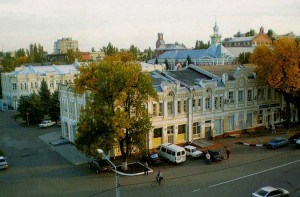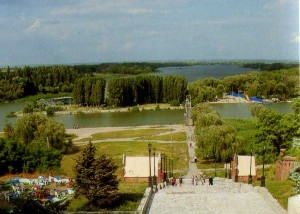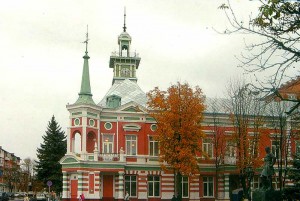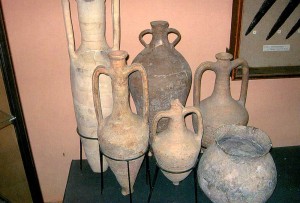Azov is one of the oldest towns of the Russian Federation Southern federal district. Founded in 1067, in the medieval times Azak/Azov was already a big port and important commercial centre of the region, a powerful Turkish fortress which was the object of over three centuries’ struggle of the Don Cossacks and the Russian state. It was through Azak that the Great Silk Route passed. In 1637-1642, Azov was the Don Cossack capital. The heroic siege of the Don Cossacks in 1641, when the 5 thousand fortress garrison defended the fortress from the 300 thousand Turkish army for four months, entered the world art history.
EN
The tourists will see the main town sight – the Azov historical, archaeological and paleontological museum reserve, one of the largest in the South of Russia, and its affiliates: Gunpowder Magazine, House-museum of polar explorer Rudolf Samoilovitch, and the “Metsenat” exhibition hall. The exhibition “Eurasian nomads’ treasures” rendered the museum world-famous. It presents over 20 thousands of rare exhibits, dating back to the times from the III millennium B.C. to the IV century A.D. The museum possesses a unique paleontological collection, the pride of which is skeletons of dinothere and trogontherian elephant which lived around 800-600 thousand years ago. The Kashin ceramics collection (2 thousand items) of the Golden Horde times is the most complete one not only in Russia, but in the whole world.
In 2000-2001, Azov unique history caught the attention of the famous traveller and scientist Thor Heyerdahl. He supposed that Azov location had once housed the Scandinavian god Odin’s city, Asgard. To check his hypothesis, he organized the work of joint Russian and Norwegian expedition, and they found quite a few artefacts confirming his ideas.
DE
Azow
Gegründet 1067, Azow ist eine der ältesten Stadte des Südlichen föderalen Bezirk Russischen Föderation. Im Mittelalter war Azak-Azow ein große Port und wichtige Handelszentrum des Azow Kreises, und eine mächtige türkische Festung dazu. Die Donkosaken und russische Staat kämpfte urn diese Festung mehr als drei hundert Jahre lang. Genau durch Azak streckte sich die Große Seidenstraße, der bekannte Handelsweg. 1637-1642 war Azow die Hauptstadt der Donkosaken. Die heroische Donkosakenbelagerung von 1641, als die nur 5-tausend Besatzung die Festung gegen dreihunderttau-send türkische Armee 4 Monate lang schützte, ist in der Weltkunst-geschichte für immer eingegangen.
Die Touristen warden die Hauptsehenswürdigkeit der Stadt sehen – das Azowische Museum-Reserve für Geschichte, Archäologie und Paläontologie, ein der größten im Südrussland, und seine Filiale: die Pulverkammer, Haus-Museum von Rudolf Samojlowitsch, der Polarforscher, und die „Mezenat” Ausstellungshalle. Die Exposition „Schätze der Eurasien Nomaden” hat dem Museum den Weltruf gewonnen. Da gibt es über 20 tausend seltene Exponate vom III. Jahrtausend v.u.Z. bis IV. Jhdt u.Z. zu sehen. Das Museum besitzt auch eine einzigartige paläontologische Sammlung, deren Stolz die Dinotherenskelette und trogontherisches Elefantsskelett (der lebte circa 800-600 tausend Jahre vor) sind. Die Kaschinkeramiksammlung (2 tausend Gegenstande) von den Goldene Horde Zeiten ist am komplettesten nicht nur in Russland, sondern auch in der ganzen Welt.
2000-2001 kriegte die einzigartige Azow Geschichte die Aufmerksamkeit des bekannten Forschungsreisenden und Wis-senschaftler Thor Heyerdahl. Er vermutete, dass Asgard, Stadt des skandinavischen Gottes Odin, konnte sich befinden, wo Azow jetzt liegt. Also die russisch-norwegische Gemeinsamexpedition wurde organisiert, und sie haben viele Artefakte hier gefunden, die seine Vermutung bestatigen.







Leave a Reply